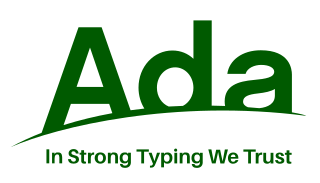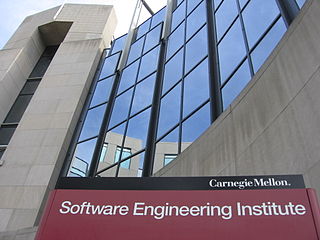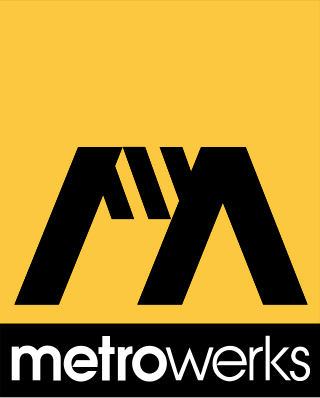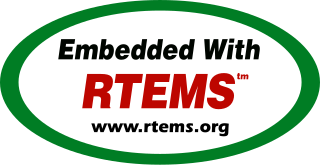
Ada is a structured, statically typed, imperative, and object-oriented high-level programming language, inspired by Pascal and other languages. It has built-in language support for design by contract (DbC), extremely strong typing, explicit concurrency, tasks, synchronous message passing, protected objects, and non-determinism. Ada improves code safety and maintainability by using the compiler to find errors in favor of runtime errors. Ada is an international technical standard, jointly defined by the International Organization for Standardization (ISO), and the International Electrotechnical Commission (IEC). As of May 2023, the standard, called Ada 2022 informally, is ISO/IEC 8652:2023.

Software Engineering Institute (SEI) is a federally funded research and development center in Pittsburgh, Pennsylvania, United States. Founded in 1984, the institute is now sponsored by the United States Department of Defense and the Office of the Under Secretary of Defense for Research and Engineering, and administrated by Carnegie Mellon University. The activities of the institute cover cybersecurity, software assurance, software engineering and acquisition, and component capabilities critical to the United States Department of Defense.
JOVIAL is a high-level programming language based on ALGOL 58, specialized for developing embedded systems. It was a major system programming language through the 1960s and 1970s.
MIL-STD-1750A or 1750A is the formal definition of a 16-bit computer instruction set architecture (ISA), including both required and optional components, as described by the military standard document MIL-STD-1750A (1980). Since August 1996, it has been inactive for new designs.
William Allan Wulf was an American computer scientist notable for his work in programming languages and compilers.

Metrowerks was a company that developed software development tools for various desktop, handheld, embedded, and gaming platforms. Its flagship product, CodeWarrior, comprised an IDE, compilers, linkers, debuggers, libraries, and related tools. In 1999 it was acquired by Motorola and in 2005 it was spun-off as part of Freescale, which continues to sell these tools. In 2015, Freescale Semiconductor was absorbed into NXP.

Real-Time Executive for Multiprocessor Systems (RTEMS), formerly Real-Time Executive for Missile Systems, and then Real-Time Executive for Military Systems, is a real-time operating system (RTOS) designed for embedded systems. It is free and open-source software.
Stream Processors, Inc. (SPI), was a Silicon Valley–based fabless semiconductor company specializing in the design and manufacture of high-performance digital signal processors for applications including video surveillance, multi-function printers and video conferencing. The company ceased operations in 2009.
William Allan Wulf was an American computer scientist notable for his work in programming languages and compilers.
DDC-I, Inc. is a privately held company providing software development of real-time operating systems, software development tools, and software services for safety-critical embedded applications, headquartered in Phoenix, Arizona. It was first created in 1985 as the Danish firm DDC International A/S, a commercial outgrowth of Dansk Datamatik Center, a Danish software research and development organization of the 1980s. The American subsidiary was created in 1986. For many years, the firm specialized in language compilers for the programming language Ada.

Anita Katherine Jones is an American computer scientist and former U.S. government official. She was Director, Defense Research and Engineering from 1993 to 1997.
Advanced Computer Techniques (ACT) was a computer software company most active from the early 1960s through the early 1990s that made software products, especially language compilers and related tools. It also engaged in information technology consulting, hosted service bureaus, and provided applications and services for behavioral health providers. ACT had two subsidiaries of note, InterACT and Creative Socio-Medics.

Dansk Datamatik Center (DDC) was a Danish software research and development centre that existed from 1979 to 1989. Its main purpose was to demonstrate the value of using modern techniques, especially those involving formal methods, in software design and development.
TeleSoft, Inc. was an American software development company founded in 1981 and based in San Diego, California, that specialized in development tools for the Ada programming language.

TLD Systems, Ltd. was an American software company active in the 1980s and 1990s and based in Torrance, California, that specialized in language compilers for the JOVIAL and Ada programming languages that were targeted to embedded systems.
Verdix Corporation was an American software company active in the 1980s and 1990s and based in Fairfax County, Virginia, that specialized in language compilers for the Ada programming language.
The 1910 Carnegie Tech Tartans football team represented the Carnegie Institute of Technology—now known as Carnegie Mellon University—as an independent during the 1910 college football season. Led by Winks Dowling in his first and only season as head coach, Carnegie Tech compiled a record of 3–7.
The 1922 Carnegie Tech Tartans football team was an American football team that represented the Carnegie Institute of Technology during the 1922 college football season. Led by eighth-year head coach Walter Steffen, Carnegie Tech compiled a record of 5–3–1.
The 1924 Carnegie Tech Tartans football team was an American football team that represented the Carnegie Institute of Technology during the 1924 college football season. Led by tenth-year head coach Walter Steffen, Carnegie Tech compiled a record of 5–4.
The 1931 Carnegie Tech Tartans football team represented the Carnegie Institute of Technology—now known as Carnegie Mellon University—as an independent during the 1931 college football season. Led by 17th-year head coach Walter Steffen, the Tartans compiled a record of 3–5–1.







